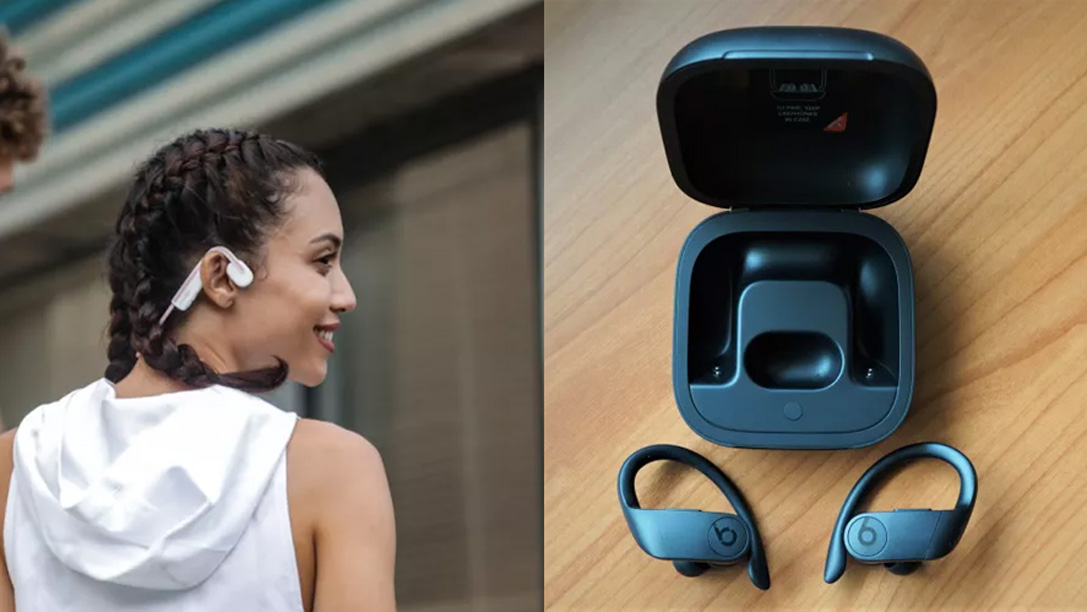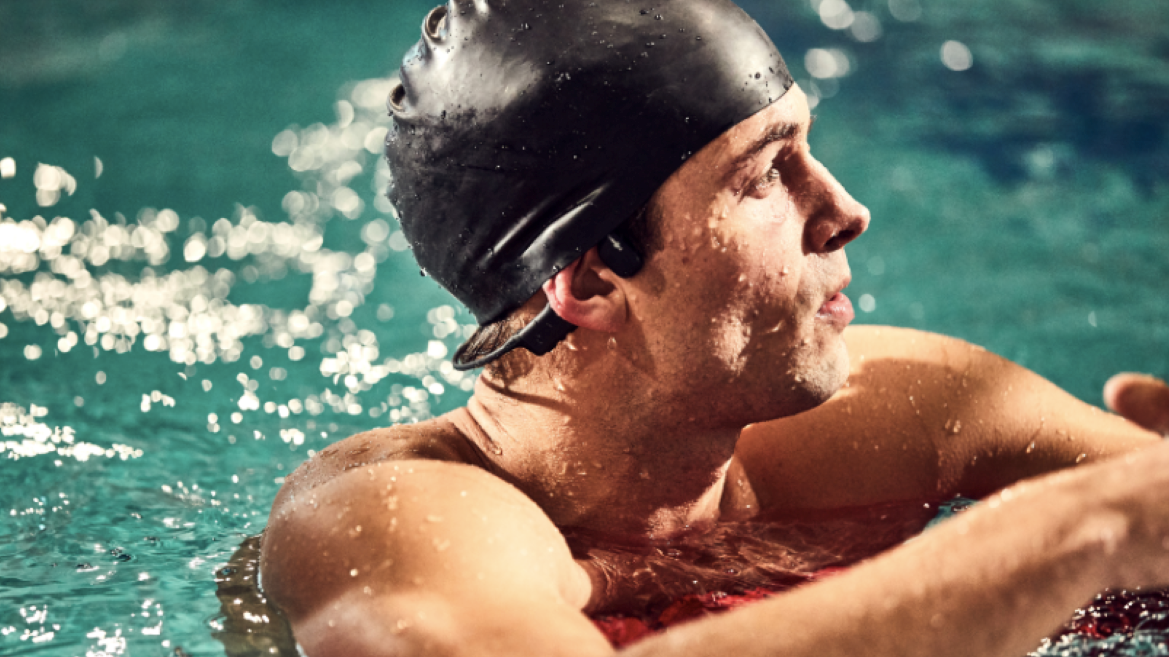Bone conduction vs in-ear buds: which running headphones are right for you?
The headphones to soundtrack your run

Which running headphones are best for you? There's a vast array of options out there right now, but traditional in-ear buds are rapidly making way on shelves for a new contender: open-ear bone conduction headphones, sending sound through your ears and temples without obstructing your ears to the world.
If you’re after the best running headphones then you have a choice to make between traditional in-ear headphones or a pair of the best bone conduction headphones. Bone conduction headphones don't obstruct your ears while doing any kind of activity, and wired models are rapidly being replaced by true wireless products.
In-ear headphones have been around for years and are now on the verge of the mainstream. while it’s taken a few years for bone conduction headphones to be accepted by runners. After all, the idea of transducers that convert sound into vibrations that get to your inner ear via your cheekbones do seem a little crazy at first.
However, they’re all the rage among runners for several reasons that we’re going to explore. Can their open-ear design keep pace with the tried-and-tested sound quality of in-ear headphones? Here’s what you need to know to make that all-important buying decision:
Bone conduction headphones: Pros
The biggest reason why bone conduction headphones have become so popular as running headphones is that they promote situational awareness. Since they don’t physically put anything in your ear – instead resting their transducers on your cheekbones to send vibrations down them to your inner ear – you can hear everything around you while you wear them.
All of this creates a product that is not only very comfortable, but also much safer. Firstly because you can hear traffic around you, which makes running close to traffic and crossing busy roads a lot safer.
Secondly, their open-ear design is also less likely to damage your hearing, partly because there’s nothing going in your ear and partly because they don’t tend to achieve a particularly high volume. Bone conduction headphones can also be useful for anyone that suffers from hearing loss because of problems with their outer or middle ear.
Although excellent as running headphones, bone conduction headphones can be worn for long periods so also work well around the office/home office for making calls and listening to your computer’s audio.

Bone conduction headphones: Cons
Bone conduction headphones aren’t going to be the best running headphones for everyone. Whatever the brand, they all have that same neckband shape, wrapping around the back of the wearer’s head.
Except that’s not always what happens: depending on the shape of your head the transducers may rest directly on the cheekbones, but the neckband will sometimes protrude at the back, leaving a large gap. That can be annoying if you wear a hat while running. Their textured silicon casings are designed to grip the skin around your ear, but if you have long hair it tends to get in a tangle.
However, the biggest negative when wearing bone conduction headphones is sound quality. They tend to lack volume, which makes them annoying when running along busy roads. Bass levels tend to be low, with products claiming to boost bass also creating a slight tickle down the cheekbones. If you listen primarily to music and you consider yourself an audiophile then bone conduction headphones are probably not going to be your favorite running headphones.
In-ear headphones: Pros
The most affordable choice for running headphones is a pair of in-ear headphones. Using tried-and-tested technology, in-ear headphones are discreet, super-light, and easy to carry everywhere. There’s no large neckband to worry about. There are not normally any cables anymore either, with true wireless models using Bluetooth now dominant, which come with charging cases.
With one small-ish monitor in each ear, you can get excellent quality music from in-ear headphones. It all depends on how much you’re prepared to spend, but in-ear headphones will generally sound superior to bone conduction headphones. Premium models can give you audiophile quality music at higher volumes.
Some offer noise-canceling tech, which blocks out your surroundings while at the same time giving you a transparency mode so you can hear what’s going on around you.

In-ear headphones: Cons
Running around busy streets while wearing a pair of in-ear headphones comes with risks. The biggest is road safety because while wearing in-ear headphones it’s very difficult to stay aware of what’s going on around you. Which is why the wearing of headphones other than bone conduction models are increasingly banned by organizers of races on any single carriageway road that is not wholly closed to traffic.
Another disadvantage of wearing in-ear headphones can be the temptation to turn the volume up high, which could have long-term effects on your hearing. The more comfortable they are the more of a risk that is since you’re more likely to wear them for longer periods.
Not that everyone finds in-ear headphones comfortable. Some models will offer swappable earbud tips that mold to different-shaped ears, but all in-ear headphones can be uncomfortable to wear for long periods.
Verdict
Whether bone conduction headphones or in-ear headphones are going to be the best running headphones for you will depend on your preferences and whether you compete in races or not. If you demand audiophile-quality music, lots of bass and you want to block out the sounds around you – perhaps if you’re on a treadmill in a gym – then in-ear headphones are more likely to suit.
However, if spoken word – podcast and audiobooks – are what you listen to, you want to be more aware of the world around you while you run, and you often compete in races, then bone conduction headphones will be the best choice. However, if you're strapped for cash, don't fret - one writer found his cheap running headphones served him just as well as expensive models.
Get daily insight, inspiration and deals in your inbox
Sign up for breaking news, reviews, opinion, top tech deals, and more.
Jamie is a freelance tech, travel and space journalist based in the UK. He’s been writing regularly for Techradar since it was launched in 2008 and also writes regularly for Forbes, The Telegraph, the South China Morning Post, Sky & Telescope and the Sky At Night magazine as well as other Future titles T3, Digital Camera World, All About Space and Space.com. He also edits two of his own websites, TravGear.com and WhenIsTheNextEclipse.com that reflect his obsession with travel gear and solar eclipse travel. He is the author of A Stargazing Program For Beginners (Springer, 2015),
